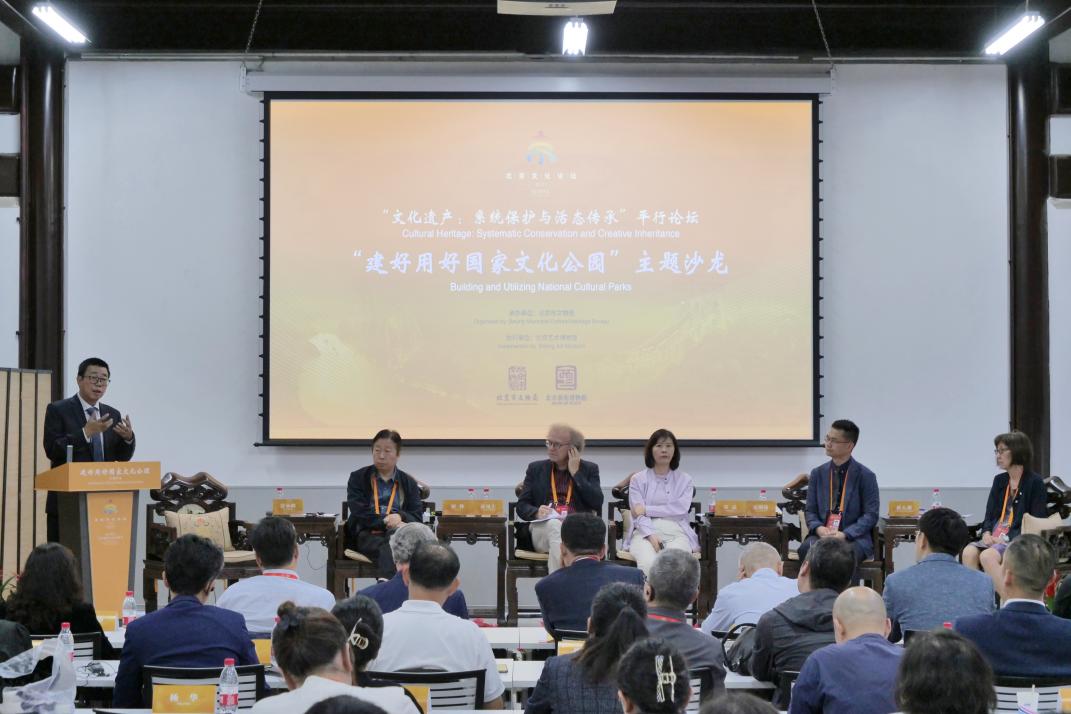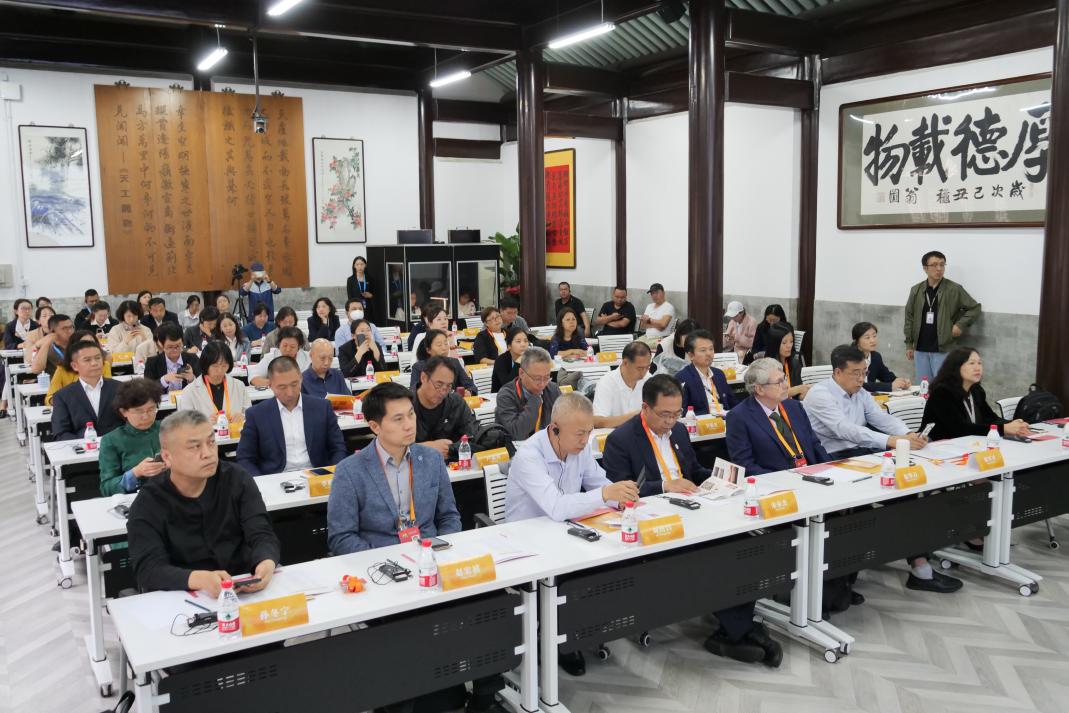
A cultural salon themed "Building and Utilizing National Cultural Parks" is held at the Beijing Art Museum on Friday afternoon. [Photo provided to chinadaily.com.cn]
A cultural salon themed "Building and Utilizing National Cultural Parks" was held at the Beijing Art Museum on Friday afternoon. The event was part of the parallel forum titled "Cultural Heritage: Systematic Conservation and Creative Inheritance," a key feature of this year's Beijing Culture Forum.
The salon brought together domestic and international experts and scholars focused on the development of national cultural parks. Through keynote speeches and panel discussions, participants explored key topics such as museum construction, the integration of intangible cultural heritage, digital preservation, and the promotion of linear cultural heritage.
Tian Lin, director and professor of the Institute of Architecture and Public Arts, the Chinese National Academy of Arts, delivered a speech on the study of incorporating intangible cultural heritage elements of the Grand Canal into the construction of national cultural park.
Tian approached the topic from the perspective of innovative utilization of cultural heritage, providing a detailed analysis of how various types of intangible cultural heritage along the Grand Canal can be integrated into the Grand Canal National Cultural Park through a dual-heritage fusion approach.
Thomas Coomans, professor of Architectural History and Heritage Conservation, the Department of Architecture, KU Leuven, in Belgium, explored the role of buffer zones in world heritage sites, offering concrete examples of their application in local heritage projects.
He emphasized that buffer zones are a critical tool for heritage protection, noting that each country or region employs different approaches to define these zones and their boundaries. He also highlighted those adaptive strategies can allow for flexible control and management of expansive areas that may not qualify for official heritage listing.
Zheng Jing, director of China Grand Canal Museum, highlighted the China Grand Canal Museum's innovative approach to museum development in the context of cultural and tourism integration.
She discussed how the museum enhances the visitor experience through precise exhibition design and creative display methods. By fully showcasing the Grand Canal's rich history and culture, the museum aims to become a model for high-quality cultural tourism destinations, she said.
Zhang Chaozhi, professor of the Department of Tourism, Fudan University, discussed how the Great Wall, as a unique linear cultural heritage, can integrate its existing segmented tourism model to better communicate its multi-layered cultural significance to the public. He emphasized that by focusing on value communication, tourism and heritage preservation can work together to enhance the understanding of the Great Wall's historical and cultural importance.

The salon brings together domestic and international experts and scholars focused on the development of national cultural parks. [Photo provided to chinadaily.com.cn]